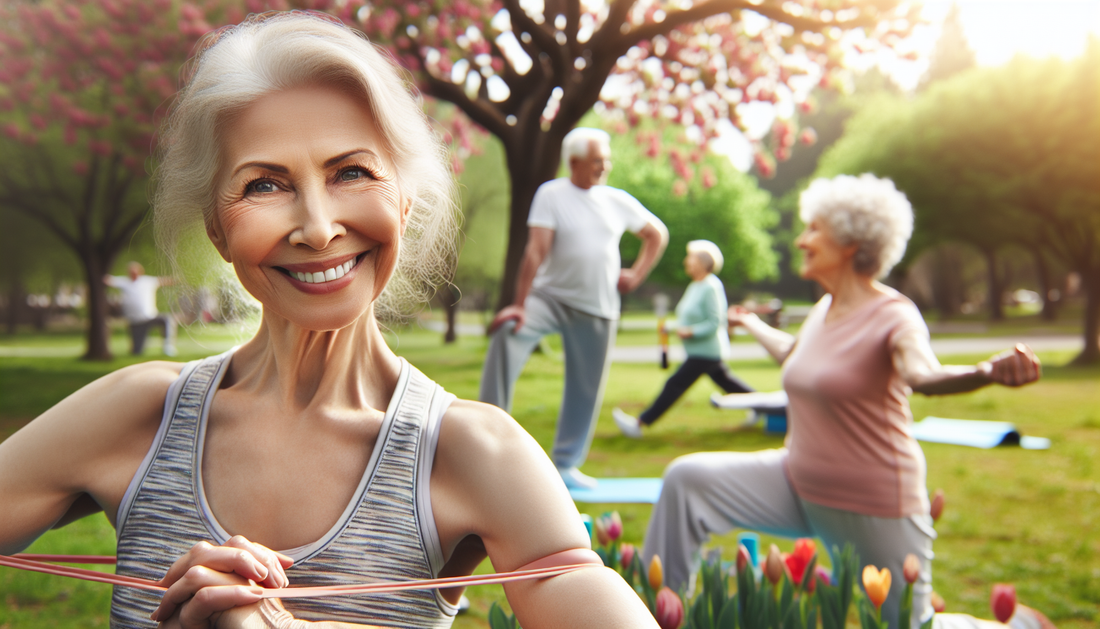
Strength and Fitness Tips for Seniors to Prevent Injuries
WonderLust3.6 RecipesShare
As seniors age, maintaining strength and fitness becomes crucial for preventing injuries and ensuring overall well-being. The following tips aim to empower older adults to stay active and safe while enjoying their favorite activities.
- Engage in regular strength training exercises at least twice a week to build muscle and enhance balance.
- Incorporate flexibility exercises like yoga or stretching routines to improve mobility and reduce the risk of falls.
- Focus on low-impact aerobic activities such as walking, swimming, or cycling to bolster cardiovascular health.
- Stay hydrated and maintain a balanced diet rich in calcium and vitamin D to support bone health.
- Consult with a healthcare provider before starting any new fitness regimen to address individual concerns or limitations.
- Consider joining community fitness classes tailored for seniors to benefit from social interaction and professional guidance.
By embracing these strategies, seniors can significantly improve their physical fitness, boost their confidence, and minimize the risk of injury while leading an active lifestyle. 💪🌟
Staying fit and active is essential for seniors to maintain their health and prevent injuries. As individuals age, physical activities can become more challenging, but they are crucial for overall well-being. According to several health experts, engaging in regular exercise is beneficial for muscle strength, balance, and flexibility. This article explores various ways seniors can remain fit while minimizing the risk of injury.
The Importance of Strength Training for Seniors
Muscle strength is vital for seniors, significantly reducing the risk of falls and injuries. Strength training should involve light weights or resistance bands. For example, the National Institute on Aging suggests that seniors incorporate strength training exercises at least twice a week. Simple activities like chair stands, heel raises, and resistance band exercises can effectively enhance muscle strength.
Creating a Safe Exercise Environment
Before commencing any fitness regime, seniors must ensure their environment is safe. Clutter-free spaces will help reduce the risk of falls during exercise sessions. Instructors often advise seniors to wear comfortable shoes with non-slip soles to enhance stability. Additionally, using supportive furniture such as sturdy chairs can aid in both exercise and rest periods.
Flexibility and Balance: Essential Components
Alongside strength training, focusing on flexibility and balance is crucial for seniors. Activities like yoga and tai chi have gained popularity as they improve flexibility, balance, and overall mental well-being. Studies have shown that participating in these activities can reduce anxiety and enhance mindfulness, which contributes to a more enjoyable exercise experience. Regular practice can aid in increasing range of motion and preventing muscle stiffness, allowing seniors to stay active longer.
Group Classes or Home Routine?
Seniors often find motivation by participating in group exercise classes. Local community centers and gyms frequently offer classes tailored for older adults. For instance, the Everglades Community Center in Fort Lauderdale hosts weekly exercise sessions including low-impact aerobics and dance classes. Alternatively, those uncomfortable in group settings can develop a home exercise routine. Utilizing online video tutorials can create a personalized workout environment suitable for individual fitness levels.
Nutrition and Hydration: Key Players in Fitness
Exercise and nutrition go hand in hand, especially for seniors. A balanced diet rich in whole grains, lean proteins, and healthy fats fuels physical activity. Staying hydrated is equally important; dehydration can lead to dizziness and fatigue, increasing the risk of injuries. Seniors should aim for at least eight glasses of water daily, especially before, during, and after exercising.
Consulting with Healthcare Providers
Before starting a new exercise regimen, seniors must consult healthcare providers to tailor workouts to individual medical needs. This is particularly important for seniors with chronic conditions such as arthritis or diabetes. Personalized advice can lead to more effective and safer workout plans, ultimately preventing injuries while enhancing fitness levels.
Monitoring Progress: Important for Motivation
Keeping track of fitness progress boosts motivation. Seniors can use journals or fitness tracking apps to record their activities, measure improvements, and set goals. Celebrating small successes reinforces positive behavior and encourages continued engagement in fitness routines. Many facilities, such as the Coral Springs Sportsplex, offer fitness assessments for seniors to monitor their progress over time.
Celebrating Fitness Achievements
Recognizing achievements, no matter how small, can enhance adherence to fitness routines. Senior fitness competitions, like those hosted by local older adult centers, create an atmosphere of camaraderie and encouragement. Friendly contests in activities such as walking or chair yoga showcase the abilities of seniors while fostering community. Engaging with peers not only strengthens their social networks but also inspires a healthier lifestyle.
Incorporating Technology for Enhanced Fitness
Technology can play a significant role in senior fitness programs. Wearable devices monitor heart rates and track steps, making it easier to achieve daily activity goals. Apps designed for older adults provide workouts tailored to their abilities and include accessible tutorials. For instance, FitForLife offers a variety of low-impact exercises specifically designed for seniors, allowing them to exercise safely at home.
The Role of Community Resources
Community resources also assist seniors in maintaining a fitness lifestyle. Libraries and community centers often provide workshops on nutrition and wellness, focusing on the importance of active aging. The Broward County Aging Services offers resources and classes aimed at enhancing the health, security, and quality of life for older adults.
Conclusion: Embracing an Active Lifestyle
Staying fit and preventing injuries through exercise is attainable, even as we age. By focusing on strength, flexibility, balance, and nutrition, seniors can improve their quality of life. Ensuring safety in the exercise environment, consulting healthcare providers, and incorporating technology further enhances success in an active lifestyle. With appropriate resources and encouragement, older adults can thrive, embracing their strength at any age.











